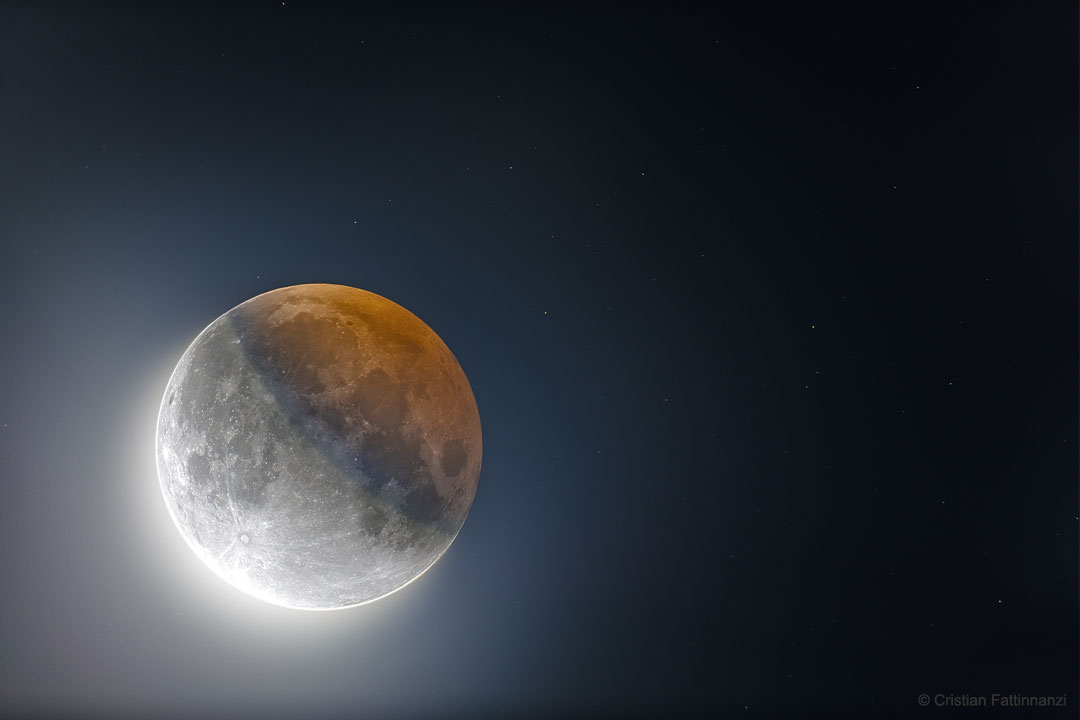Here is a beautiful photo from Astronomy Pic of the Day. HERE

Image Credit & Copyright: Cristian Fattinnanzi
Explanation: What could create such a large circular shadow on the Moon? The Earth. Last week’s full Moon — the Buck Moon — was so full that it fell almost exactly in a line with the Sun and the Earth. When that happens the Earth casts its shadow onto the Moon. The circularity of the Earth’s shadow on the Moon was commented on by Aristotle and so has been noticed since at least the 4th century BC. What’s new is humanity’s ability to record this shadow with such high dynamic range (HDR). The featured HDR composite of last week’s partial lunar eclipse combines 15 images and include an exposure as short as 1/400th of a second — so as not to overexpose the brightest part — and an exposure that lasted five seconds — to bring up the dimmest part. This dimmest part — inside Earth’s umbra — is not completely dark because some light is refracted through the Earth’s atmosphere onto the Moon. A total lunar eclipse will occur next in 2021 May.
Tomorrow’s picture: extragalactic ejection

































Love the goings on in the cosmos. I really would like a telescope. Last week EarthSky (such a great website) informed us that at twilight you could see Saturn, the moon, Jupiter and Antares, and there they were, what a marvel. Last night the ISS went overhead, we were getting ice cream and a man nearby told us, and there it was, going 18,000 mph.
“a man nearby”, sometimes I wonder… could have been an angel?